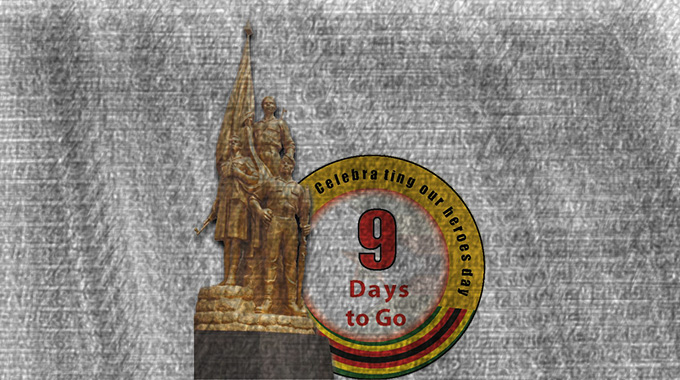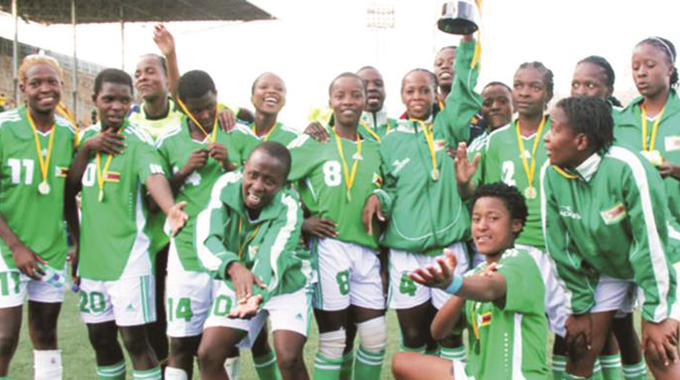Enshrinement of war sites critical

Beaven Dhliwayo Features Writer
Zimbabwe is home to many sites, cemeteries and monuments memorialising one of the most traumatic events in the region — the First and Second Chimurenga liberation wars that brought about the country’s independence.
Heritage tourism, which emphasises on touring places of historical and cultural significance should be one of Government’s priorities in marketing the country to foreigners who are keen on appreciating the country’s rich history.
Government should fully support the ongoing identification and enshrinement of Zimbabwe’s cultural and historical sites to help revive the tourism sector which has potential to be one of the key pillars of the country’s economy.
Enshrinement of war sites is both relevant and timely as the tourism sector is on a rebound buoyed by the country’s improving international perception, courtesy of the Second Republic.
In his Heroes Day speech last year, President Mnangagwa said the Liberation War Heritage Programme will continue to run in honour of the heroes and heroines who ensured that the country gained independence from colonial bondage.
The programme seeks to preserve the country’s important history through, among other things, enshrinement of liberation war sites.
Zimbabwe has many liberation war sites that need to be celebrated and if well packaged with the country’s rich history, it will encourage development of national identity and create a national pride through tourism.
National identity is vital as it will instil a sense of pride in all Zimbabweans and build social and national cohesion.
Several war sites can be used to the advantage of the country and improve the quality of life of citizens through equitable geographic distribution of tourism products.
There are historical sites which can attract both domestic and foreign tourists such as the Chinhoyi Battle Site and the Seven Heroes burial site in Chinhoyi, Trabablas Trail in Masvingo, Pupu Shangani in Matabeleland North, Old Bulawayo Site in Bulawayo, Tangwena Village in Manicaland and Gonakudzingwa Restriction Camp in Chikombedzi.
All the above mentioned sites are rich in history that can be harnessed to increase firstly, Zimbabweans’ appreciation of their history and heritage, whilst on the other hand boosting tourism attraction to foreigners.
Chinhoyi Battle Site
The Battle of Chinhoyi in 1966, was fought by seven gallant guerillas who had infiltrated the country from Zambia at the beginning of the Second Chimurenga and has a status of legend in Zimbabwe.
The Chinhoyi battle was also the first military action against the Ian Smith regime after his infamous and illegal Unilateral Declaration of Independence of November 1965.
It is mainly reckoned as the intense beginning of the second and decisive stage of the liberation struggle dating back to the First Chimurenga/Umvukela of 1896, where the prophetess and revolutionary matriarch (Mbuya Nehanda) warned of the demise of white rule by invoking her “bones” to “rise again”.

A resident walks through Chinhoyi Provincial Heroes Acre recently and (inset) the roll of honour for the Chinhoyi Seven, which lies a stone’s throw from the provincial shrine
And the famous Battle of Chinhoyi, which took place 53 years ago, is the poster of the fulfilment of this promise — along with its heroes, David Guzuzu, Arthur Maramba, Christopher Chatambudza, Simon Chingosha Nyandoro, Godfrey Manyerenyere, Godwin Dube and Chubby Savanhu.
Trabablas Trail
Trabablas Trail – war era historic bombing of a Rhodesian locomotive and named after one of President Mnangagwa’s several nom-de-guerres, “Trabablas Dzokerai Mabhunu’”, is one of the historic sites in the country earmarked to become a national monument under the ongoing enshrinement programme.
President Mnangagwa, together with his colleague in the “Crocodile Gang”, the late Cde Matthew Malowa, blew up the locomotive in 1964 as part of a planned series of subversive activities against the colonial regime that culminated in the beginning of the decisive phase of the Second Chimurenga.
President Mnangagwa eventually served 10 years behind bars for bombing the Rhodesia Railways locomotive, escaping mandatory death sentence for the daring feat on a technicality.
Pupu Shangani
In December 1893, at a place called Pupu deep in the forests of Shangani in Matabeleland, 33 officers and men of the ill-fated patrol sent by Major Patrick William Forbes to look for the fleeing King Lobengula were killed in a desperate battle against overwhelming numbers of Ndebele warriors.
The Ndebele army that accompanied the King was made of the iMbizo, iNsukamini, iNgobo, iHlathi, iSiziba and iNgubo regiments with Mtshana Khumalo (the commander of the iMbizo) the overall commander.
The remains of the Shangani patrol remained at this spot at the mercy of nature.
Several weeks later, Bulawayo trader James Dawson visited the site and buried what he could. Subsequently, the remains were exhumed and reburied in Fort Victoria (now Masvingo), the home of many of the patrol, including Allan Wilson.
In 1904, the remains of the men of the Shangani patrol were moved once again, this time to their final resting place in the imposing granite and bronze memorial adjacent to Cecil Rhodes’ grave in World’s View, Matopos.
Old Bulawayo Site
Old Bulawayo was established by King Lobengula as his capital in 1870 after the death of his father King Mzilikazi in 1868.
Its layout to an extent reflects the complex heritage of the Ndebele people.
In 1881, after 11 years of occupation, Lobengula moved his capital to what is now the modern city of Bulawayo. He ordered the destruction of the old settlement by fire.
In 1990, National Museums and Monuments of Zimbabwe identified koBulawayo as suitable for an educational and tourist centre.
In 1998, it was reconstructed as a theme park. Structures such as a wagonshed, the outer palisade, King Lobengula’s palace, eight beehive huts and cattle kraal, as well as a nearby interpretive centre were constructed.
Unfortunately, in August 2010, a serious bush fire sweep through the site, destroying much of what had been rebuilt. Only the Interpretive Centre survived unscathed.
Efforts are underway to reconstruct the site.
Tangwena Village
During the 1960s, the number of whites coming into the country increased, resulting in many blacks being disposed of their land and forced into “reserves” that were already overcrowded.
But Chief Rekayi Tangwena and his people of Kaerezi, occupying 50 square miles of land in Nyanga District, defied the colonial government’s 1963 order to move from their ancestral land which had been deemed European land.
They were ordered to relocate to Gokwe, Bende, some 650 kilometres away and they persistently refused.
Chief Tangwena and his people had lived in the Inyanga area for hundreds of years and religiously fought the evictions and took their case to court.
When the colonial government realised in 1968 that Chief Tangwena and his people could not be lawfully removed, they issued a decree that effectively gave way to the new Land Tenure Act.
With this piece of law in hand, on October 29, 1970 the police arrived at Kaerezi village at around 4am with 34 land rovers, five trucks and a bulldozer to evict the Tangwena people.
The security forces burnt down their homes, destroyed their crops, impounded their cattle, arrested men and women and closed down their school.
All the impounded cattle were immediately sold by the pound-master.
Surprisingly, nothing was done to resolve the situation – no sympathies and no protests by international communities.
Rather than move to Bende, Chief Tangwena and his 1 000 people fled to the mountains surrounding their homes and stayed there for about six years, living a hand-to-mouth existence subject to sudden police raids and patrols.
Gonakudzingwa Restriction Camp
Gonakudzingwa’s shadow looms large in the history of Zimbabwe’s struggle for independence as it was once home to nationalist leaders such as the late Father Zimbabwe, Dr Joshua Nkomo; the late Vice President Cde Joseph Msika and veteran nationalist Cde Josiah Chinamano, among others, who were banished there by the heinous Ian Smith regime in a bid to deflate their nationalist zeal.
While the place remains etched in the minds of many who witnessed the liberation struggle, a visit by The Patriot newspaper recently showed that it is history that is slowly slipping away from the grasp of many Zimbabweans.
Declaration of Gonakudzingwa as a national monument will see the camp undergoing rehabilitation to restore the facility to its original state when it used to house predominantly Zapu nationalist leaders during the country’s war of liberation.
The development of these and other war sites will no doubt boost the country’s tourism industry as it will improve the already available attraction base.
The country has been waiting for too long for these developments and the enshrinement programme will see both domestic and international tourists able to appreciate Zimbabwe’s rich history.









Comments